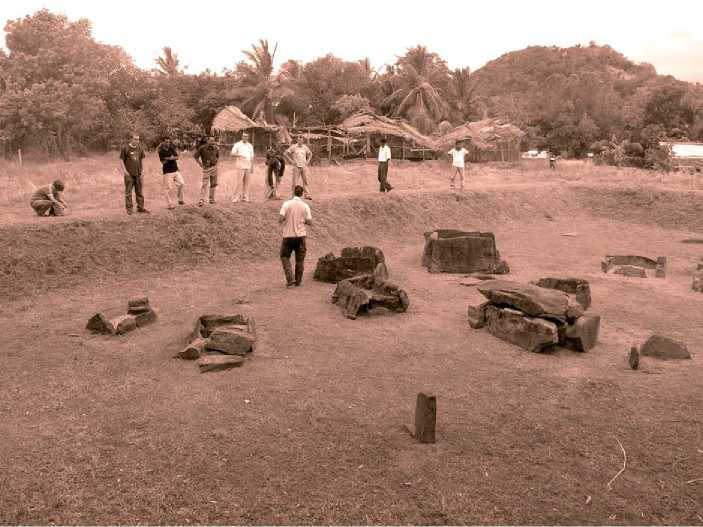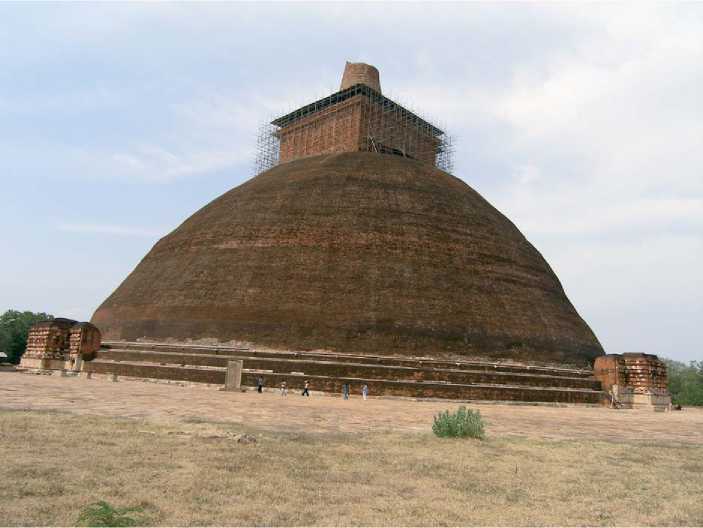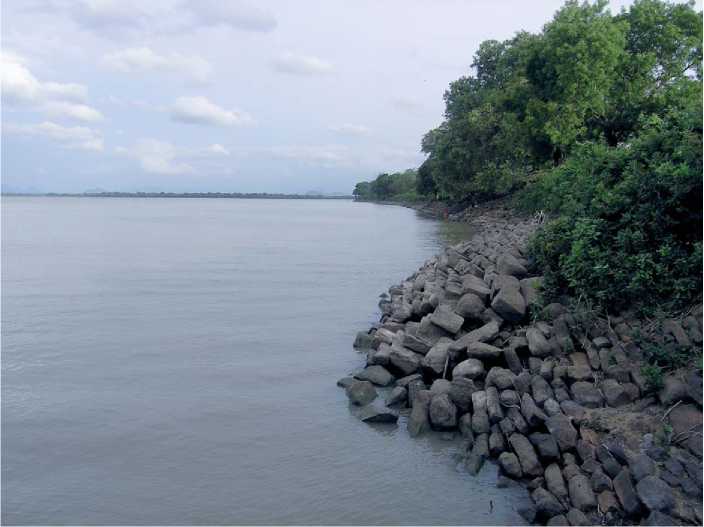The Early Historic period begins in Sri Lanka around 450 BC and is distinct but still shows clear cultural continuity with the preceding Iron Age. The Early

Figure 2 Megalithic cist cemetery at Ibbankatuva.
Historic is characterized by the emergence of urbanization, literacy, long-distance trade and the arrival of Buddhism. Equally significant, its archaeological record is augmented by the appearance of the island’s earliest ‘historical’ records - the Mahavamsa and Dipavamsa. Recording accounts of the history of Sri Lanka from its initial colonization by the north Indian prince, Vijaya, and his companions in the middle of the first millennium BC, these chronicles were consolidated a thousand years later by Buddhist monks and provide a valuable, if limited, context for the interpretation of Early Historic archaeology.
Recorded in the Mahavamsa and Dipavamsa as one of the first settlements to be established by Vijaya’s followers, the city of Anuradhapura in the northern central plains of Sri Lanka is undoubtedly at the center of the Early Historic period in Sri Lanka. Its position is reinforced by the fact that it has been both excavated and published to a high standard, first by Deraniyagala, and more recently by Coningham. Their fieldwork suggests that Anuradhapura expanded dramatically within a newly fortified circuit enclosing almost 70 ha dwarfing other excavated Early Historic sites such as the port site of Mantai on the northwest coast and Kantarodai in the Jaffna Peninsula. Although Tissama-harama in the south of the island has long been identified as the capital of the sub-kingdom of Ruhuna and contains a similar pattern of monasteries and reservoirs, its exact size is still unknown. Despite this focus on larger settlements, the failure of recent surveys to identify towns within Anuradhapura’s hinterland has led to the suggestion that monasteries may have performed many of the administrative tasks associated with this category of settlement.
Capital from the fifth century BC until 1017 AD, Anuradhapura’s pre-eminence is reinforced by its position as the birthplace of Buddhism in Sri Lanka, as it was here that the missionary Mahinda, son of the Mauryan emperor Asoka (see Asia, South: Buddhist Archaeology), arrived in the middle of the third century BC. Converting king Devanampiya Tissa and his court to Buddhism, the establishment of Anuradha-pura’s Mahavihara or great monastery was augmented by relics of the Buddha and a cutting from the Bodhi tree at Bodhi Gaya and led to a growth in pilgrimage from across the Buddhist world. The first of the city’s great brick stupas, the 106.5 m high Ruyanvelisaya and 58.5 m high Mirisavati were built on the orthodox Mahavihara in the second century BC but they were challenged by the establishment of Abhayagiri in the first century BC and Jetavanarama monastery in the third century AD, the former centered on a stupa of 71.5 m and the latter on one of 160 m (Figure 3).
Indicating the availability of surplus labor and resources to the kings of Anuradhapura, their fortified capital was surrounded by 25 km2 of monastic establishments with a recorded community of over 10 000 monks and nuns. Anuradhapura’s survival within the dry zone of the island is testimony to the

Figure 3 Jetavana stupa at Anuradhapura.

Figure 4 Kalawewa reservoir.
Creation of a vast hydraulic system. Begun with the construction of simple gravity reservoirs, such as the Basawak Kulam (91 ha) and Tissa Wewa (160 ha), to store excess water from the wet season for use in the dry season, the Malwattu Oya was unable to satisfy the increasing demands of the city (Figure 4). Although the construction of the Nuwara Wewa (1288 ha) reservoir in the first century AD eased the situation, water had to be diverted to Anuradhapura from other river catchments through a system of feeder channels and vast storage reservoirs in the fifth century AD. Guaranteeing two rice harvests a year, Anuradhapura’s surplus facilitated its participation in Indian Ocean trade as evidenced by Roman glass, intaglio, coins and metalwork, and early Islamic and Chinese glazed vessels.
The dynastic capital for one and a half millennia, the Culavamsa records that Anuradhapura was sacked by military expeditions from south India in the eleventh century AD and, despite restoration attempts by later kings, the collapse of its integrated system of irrigation, agriculture and ritual eventually led to the depopulation of the dry zone. Laying the foundations for much of the island’s urban, mercantile, economic, religious and secular character, many Sri Lankans still regard the island’s Early Historic period, indelibly associated as it is with Anuradhapura, as a halcyon age.
See also: Asia, South: Buddhist Archaeology; India, Paleolithic Cultures of the South; Megaliths; Paleolithic Cultures.




 World History
World History









